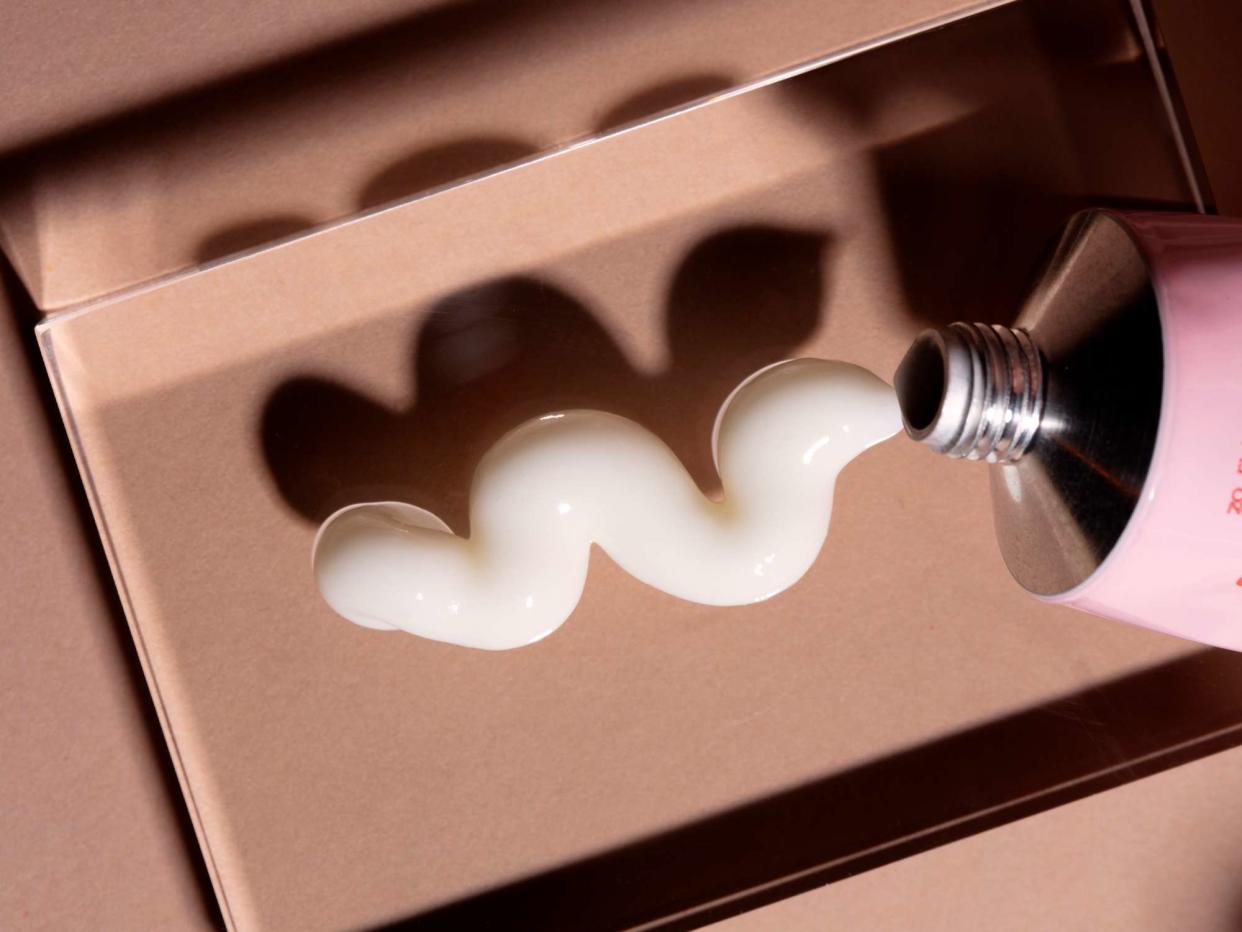AHAs/BHAs vs Retinol: Dermatologists Explain When and How to Use Each

Liz Desousa for Byrdie
Medically reviewed by Rachel Nazarian, MD, FAADFact checked by Michelle Regalado
Active ingredients are the skincare saviors we never knew we needed, until now. And while we wish this knowledge had been more mainstream, say, decades ago (or just a few years ago when teen acne threatened to transcend into adulthood), now that we have it we're excited. If you're like us, you may have already built a bathroom-cabinet stockpile of active-ingredient heavyweights like acids (alpha- or beta-hydroxy) and retinols. But, don't let that enthusiasm become your skincare downfall. The caveat to such potent ingredients? They don't play well together.
That doesn't mean you have to settle for just one, however. We asked dermatologists to tell us how to use both and get all the benefits.
Meet the Expert
Rachel Nazarian, MD is a board-certified dermatologist at Schweiger Dermatology. She specializes in general and cosmetic dermatology, as well as dermatological surgery.
Onyeka Obioha, MD, is board-certified medical and cosmetic dermatologist at Boutik Dermatology in Los Angeles.
Scroll through to find out how it’s done.
What Are AHAs/BHAs?
Acids, both alpha-hydroxy and beta-hydroxy, exfoliate skin. “Glycolic acid and salicylic acid work better in terms of chemical exfoliation—helping to resurface skin, lighten sunspots, minimize discolorations, and even out skin texture,” Nazarian says. To prevent skin damage, use an AHA every other day, at maximum.
What Is Retinol?
“Retinol works by decreasing melanin (or pigment production in skin) and decreasing sunspots, but is also capable of increasing collagen production in deeper layers of skin and helping to maintain the collagen and elastin already there,” Nazarian says. Retinols, like RoC Retinol Correxion Deep Wrinkle Serum ($29), remain the most dermatologist recommended anti-ager because of the scientifically proven benefits (it’s the most studied skincare ingredient to date).
According to Obioha, topical vitamin A, or retinols, "disrupt the pigment producing pathway and increases cell turnover, making them especially great for acne induced hyperpigmentation. As long as you are not pregnant or nursing, you can benefit from a retinoid. It’s the holy grail in skincare. If you have concerns regarding acne, hyperpigmentation, skin texture and aging, you can benefit from a retinol."
Tips
Retinols should only be used at night as they are inactivated with UV exposure, notes Obioha.
Mixing AHAs and BHAs
"Alpha & Beta-Hydroxy-Acids (AHAs/BHAs) increase cell turn over, brightening complexion," explains Obioha, who notes they can also be helpful for acne, hyperpigmentation, and keratosis pilaris. They are available in many different formulations, from cleansers and gels to serums and creams and according to Obioha, "can be used morning and night though they may make skin more sensitive to the sun if used in the morning before sun exposure." The two can be mixed together, and often can be found paired in many resurfacing products on the shelf, though BHAs typically come in lower concentrations than AHAs. However, depending on potency and frequency of use, acids can be irritating to sensitive skin so if you notice any redness or discomfort, reduce usage before building it back up as the skin acclimates.
Tips
When introducing any active ingredients to your skincare routine, it's always best to start slow, monitor how the skin reacts, and gradually increase from there.
Mixing AHAs/BHAs With Retinols
As AHAs, BHAs, and retinoids are all types of chemical exfoliants, it isn't recommended to combine these ingredients within the same routine. Otherwise, there's a higher likelihood of irritation and skin barrier damage.“These ingredients should not be mixed and applied at the same time,” Nazarian says. Applying retinol and AHA/BHA in one evening is a recipe for irritated, dry skin. The only exception is if you're' using a single product that contains both ingredients, which would have been formulated to ensure stability and reduce the risk for irritation. That being said, most skin types won't benefit from such a powerful combination.
How to Use AHAs/BHAs and Retinols Together
“To ensure each product is being used and maintained in its most stable form, apply only one product to your face nightly,” Nazarian says, adding that the best way to reap the benefits of both retinols and acids is to add them in one at time, allowing time to adjust to each one before switching to the other. “For example, one would begin by using a small pea-sized amount of retinoid once a week, and wait to see how the skin reacts before moving to twice weekly and then three times weekly. Once this regimen has been maintained for weeks, you can begin a topical acid once weekly on a night you’re not using the retinoid. And then slowly increase frequency to every other night, alternating with the retinoid.” If you’re new to active ingredients like these, look for oil formulas, like the Instagram-famous MARA Evening Primrose + Green Tea Algae Retinol Oil ($120), which also help soothe skin.
"Pairing retinoids and AHAs/BHAs can result in dryness and skin irritation," echoes Obioha. "If using a retinol, I recommend using acids either as a cleanser or on alternate nights so that the skin doesn’t become over irritated."
The Takeaway
When it comes to active skincare ingredients, like acids and retinols, active is the key word. Their potency is what contributes to the miracle results they're able to achieve but they can also burn you (literally) in their wake. Curb your enthusiasm, regardless of how warranted it may be, and dip a toe (or, finger in this case) slowly before diving straight in. And remember: While AHAs and BHAs may play well together, acids and retinols just don't mix. Products that contain both ingredients should be stable and well-tolerated, but it isn't recommended to combine separate retinol and AHA/BHA products within the same routine.
Up Next: Everything You Need to Know About Glycolic Acid Peels
Read the original article on Byrdie.

